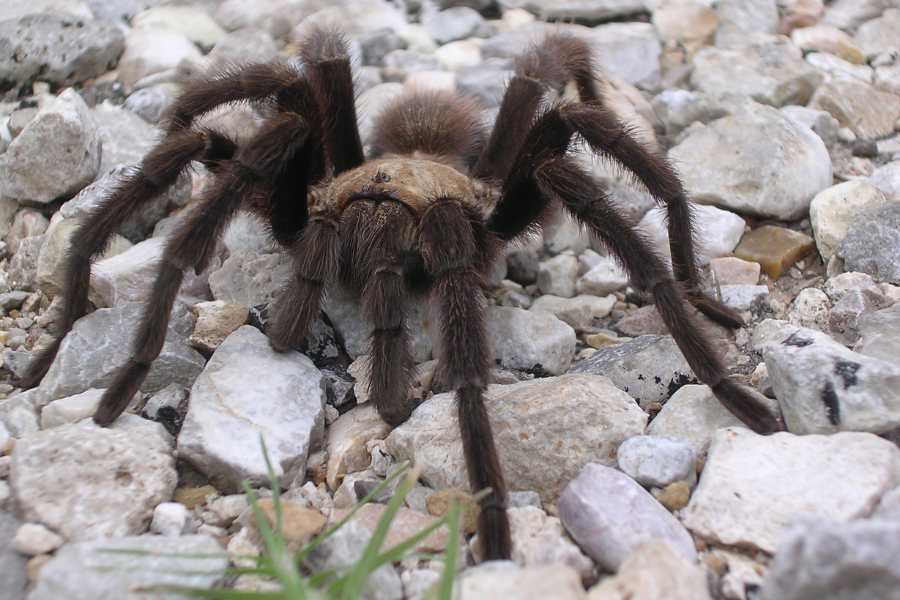Mastering Tarantula Care: Expert Tips for Raising Healthy and Happy Pet Spiders

Are you considering a pet tarantula?
As unusual and exotic as these creatures may be, they can make fantastic pets for the right person.
In this ultimate pet tarantula guide, we will discuss everything you need to know about tarantula care, tips for choosing the right species, and answer frequently asked questions about these fascinating pets. Let's get started!
Choosing the Right Tarantula Species
There are over 900 species of tarantulas in the world, but not all are suitable for captivity. When selecting a pet tarantula, consider factors such as size, temperament, and care requirements.
Some popular species for beginners include the Chilean Rose Hair, Mexican Redknee, and Costa Rican Zebra tarantulas.
These species are generally docile, hardy, and low-maintenance, making them ideal for first-time tarantula owners.

Creating the Ideal Tarantula Habitat
A well-designed tarantula habitat is essential for your pet's health and well-being. Tarantulas need a secure, appropriately-sized enclosure with a proper substrate, hiding spots, and ventilation.
A general rule of thumb for enclosure size is three times the spider's leg span in width and length, with enough height for burrowing or climbing species.
For substrate, use a mixture of peat moss, coco fiber, or vermiculite to maintain proper humidity levels. Provide hiding spots, such as cork bark or artificial caves, to help your tarantula feel secure.
Temperature, Humidity, and Lighting
Most tarantulas thrive in temperatures between 70-85°F and require humidity levels of 50-80%, depending on the species.
Use a heat mat or ceramic heat emitter to maintain proper temperatures, and mist the enclosure or provide a water dish for humidity control.
Tarantulas do not require special lighting; however, avoid bright, direct light as it can stress your pet.
Feeding and Watering Your Tarantula

Tarantulas primarily feed on insects, such as crickets, roaches, and mealworms. Offer food once or twice a week for adults and more frequently for growing juveniles.
Remove uneaten food after 24 hours to prevent mold and mites. Provide a shallow water dish with fresh water for your tarantula to drink and maintain humidity levels.
Molting and Growth
Molting is a natural process for tarantulas, during which they shed their exoskeleton to grow. Signs of an impending molt include lethargy, loss of appetite, and a darkening abdomen.
During molting, avoid handling or feeding your tarantula and maintain proper humidity levels to facilitate a successful molt.
FAQs about Tarantula Care
How long do tarantulas live?
Tarantula lifespans vary depending on the species and gender. Female tarantulas typically live longer, with some species living up to 20 years or more. Males generally have shorter lifespans, ranging from 3 to 10 years, depending on the species.
How often should I handle my tarantula?
Handling should be kept to a minimum, as tarantulas are delicate and can become stressed. Some docile species may tolerate occasional handling, but always handle with care and respect your tarantula's boundaries.

Can tarantulas be housed together?
Generally, tarantulas are solitary creatures and should not be housed together. They may become territorial and cannibalistic, leading to injury or death.
Do tarantulas bite, and are they venomous?
While tarantulas can bite, they are typically reluctant to do so. Most pet tarantula species possess venom that is mild and unlikely to cause serious harm to humans. However, a bite can be painful and cause localized swelling or discomfort.
How can I tell if my tarantula is stressed or sick?
Signs of stress or illness in tarantulas may include lethargy, loss of appetite, abnormal posture, or unresponsiveness. If you suspect your tarantula is unwell, consult an experienced exotic veterinarian for advice.
Conclusion
Tarantulas can make fascinating and low-maintenance pets for the right person.
By carefully selecting the appropriate species, providing suitable habitats, and following proper care guidelines, you can ensure a happy and healthy life for your pet tarantula.
We hope this ultimate guide has been helpful in your journey to becoming a successful tarantula owner. Happy spider-keeping!
Save this PIN for Later 😊

